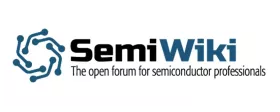HDMI vs DisplayPort?... DiiVA is the answer from China!
During the early 2000’s, when OEM starting to question the use of LVDS to interface with display devices, two standards has emerged: High-Definition Multimedia Interface (HDMI) and DisplayPort. HDMI has been developed by silicon Image, surfing on the success of Digital Video Interface (DVI), and was strongly supported by a consortium counting Hitachi, Ltd., Panasonic Corporation, Philips Consumer Electronics International B.V., Silicon Image, Inc., Sony Corporation, Technicolor S.A. (formerly known as Thomson) and Toshiba Corporation, the “founders”. Pretty impressive list, at least in the Consumer Electronic market! The Video Electronics Standards Association (VESA) decided to launch a competing standard, DisplayPort. DisplayPort was back-up by companies linked to the PC market, like HP, AMD, Nvidia, Dell and more… The competition looked promising, as both standards exhibits the same high level features: based on high speed differential serial signaling, packet based protocol, layered based architecture, allowing to increase bandwidth by using 1 to 3 lanes (HDMI) or 1 to 4 (DP) for the most significant.
To read the full article, click here
Related Semiconductor IP
- Network-on-Chip (NoC)
- 12-bit, 400 MSPS SAR ADC - TSMC 12nm FFC
- DVB-S2 Demodulator
- UCIe PHY (Die-to-Die) IP
- UCIe-S 64GT/s PHY IP
Related Blogs
- HDMI, DisplayPort, MHL IPs + Engineering Team = Good Move
- DisplayPort 2.1 vs DisplayPort 1.4: A Detailed Comparison of Key Features
- UA Link vs Interlaken: What you need to know about the right protocol for AI and HPC interconnect fabrics
- VESA Adaptive-Sync V2 Operation in DisplayPort VIP
Latest Blogs
- Enabling End-to-End EDA Flow on Arm-Based Compute for Infrastructure Flexibility
- Real PPA improvements from analog IC migration
- Design specification: The cornerstone of an ASIC collaboration
- The importance of ADCs in low-power electrocardiography ASICs
- VESA Adaptive-Sync V2 Operation in DisplayPort VIP
